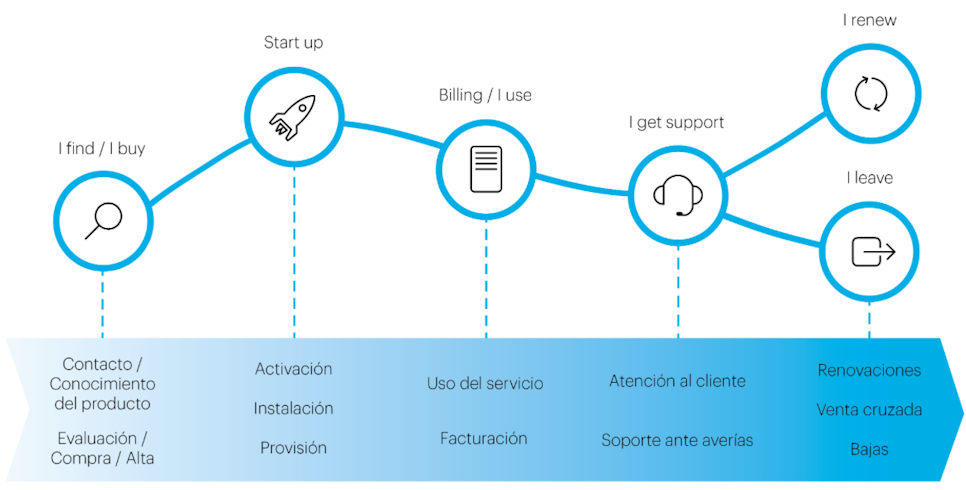Article
The challenge of improving customer experiences #CustomerJourney

Improved customer experiences and client behaviors will be reflected in business profits
Technology changes quickly, it provides more and more features, and it is increasingly affordable. This has led people to quickly adopt these changes, which has resulted in new needs and ways of interacting, as well as a new customer paradigm: digital, hyper-connected, omni-channel, mobile, influential, and highly demanding…
Although it is not easy to create a positive customer experience, it has become one of the most important success factors for businesses. Positive experiences result in more recommendations to potential customers. These customers feel respected, valued, and committed, and this provides us with a competitive advantage that is hard to beat.
According to a Forrester Research report, customer experience management, or CEM, affects three aspects of customer behavior that are directly related to the business:
Customer initiative to buy more
Resistance to changing providers
Becoming an opinion leader for the product and the existing provider
This report presents data which shows that top companies in the area of customer experience have advantages of about 14% compared to others that lag behind customer experience in terms of the three dimensions described.
Customer experience refers to the quality of a customer’s experience with a company as a result of the contact they have with it: communication and brand, the use of the product or service, channel sales, customer service, technical support, etc. Therefore, customer experience management is the process of strategically managing a client’s overall experience with a product or service that is provided by the company.
Defining the vision of what we want the experience of our clients to be will set the strategic focus and lead to the definition of the customer journey. Due to the decisive nature of this “customer journey” —it defines how the customer’s final experience with our service will be—, Nae applies a top-down methodology for product development in which the customer journey is defined as the first step. This makes it possible to guarantee that subsequent phases (defining business/functional processes, tools, ICT developments, etc.) are aligned and contribute to the complete fulfillment of the target experience.
We must be ambitious. We want the best for our customers, and the goal should be to achieve this.
The goal is to establish the customer journey as the foundation on which all the definition phases and technical developments that are needed for a launch take place. This avoids optimizing process or executing technical developments without having a clear idea of what the customer expects.
To define the customer journey, all the points of contact and the moments of truth between a customer and the company are identified. To do so, we must be ambitious (we want the best for our customers, and the goal should be to achieve this), pay attention to detail (every point of contact with the customer is key in their overall experience), and look further ahead (the best customer experience is achieved by focusing on the short and long term).
Therefore, this definition will cover all the points of contact with the customer throughout their life cycle with the service or company:

In recent years, the trend towards CEM has not waned, primarily due to the fact that improved experience levels and customer behaviors result in business profits. Some of the benefits of applying the CEM methodology are:
NPS (net promoter score): Positive experiences result in more references for potential future customers. Attracting new customers through recommendations.
Customer loyalty: The higher perception of satisfaction and the improved brand image contribute to a longer customer life cycle.
High value portfolio: The customer’s tendency to buy more. There is more cross-selling and up-selling thanks to specific knowledge about the customer and the development of commercial tools (customer orientation and customer relationship management, or CRM).
Lower service costs: Campaigns that are more agile and effective, customer service that is fast and efficient because there is access to all of the customer’s information associated with business processes, aligned, in turn, with the customer journey.
Many companies have traditionally invested in customer experience management, while others have not. In any case, they are all facing this new challenge and they must deal with it. The first group must evolve, and the second group must completely redefine itself while understanding the reality of the new customer, their interactions, and the new digital ecosystem.

